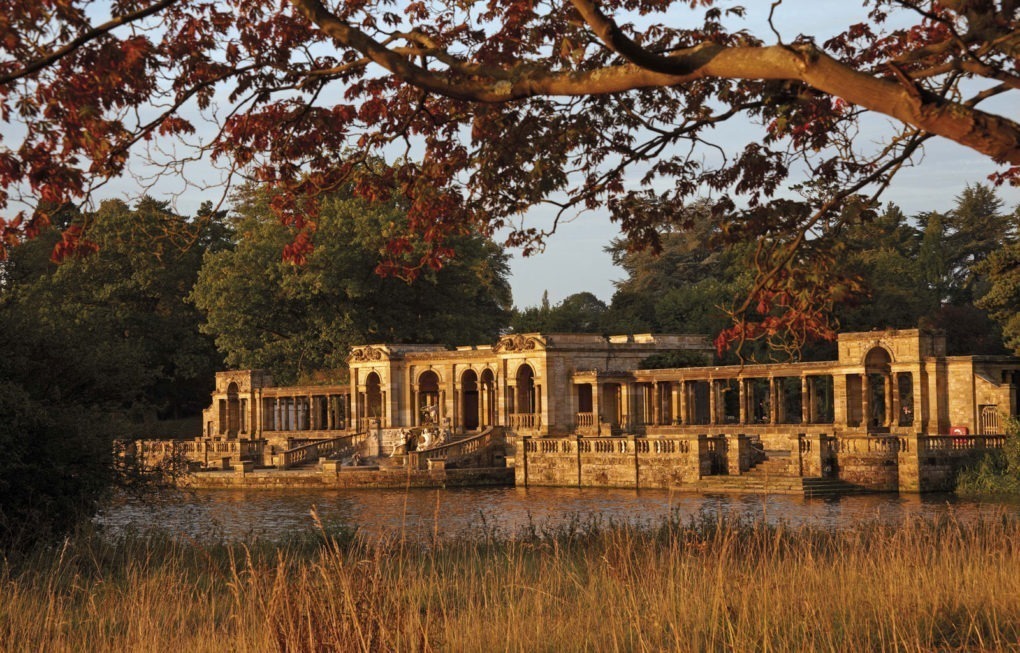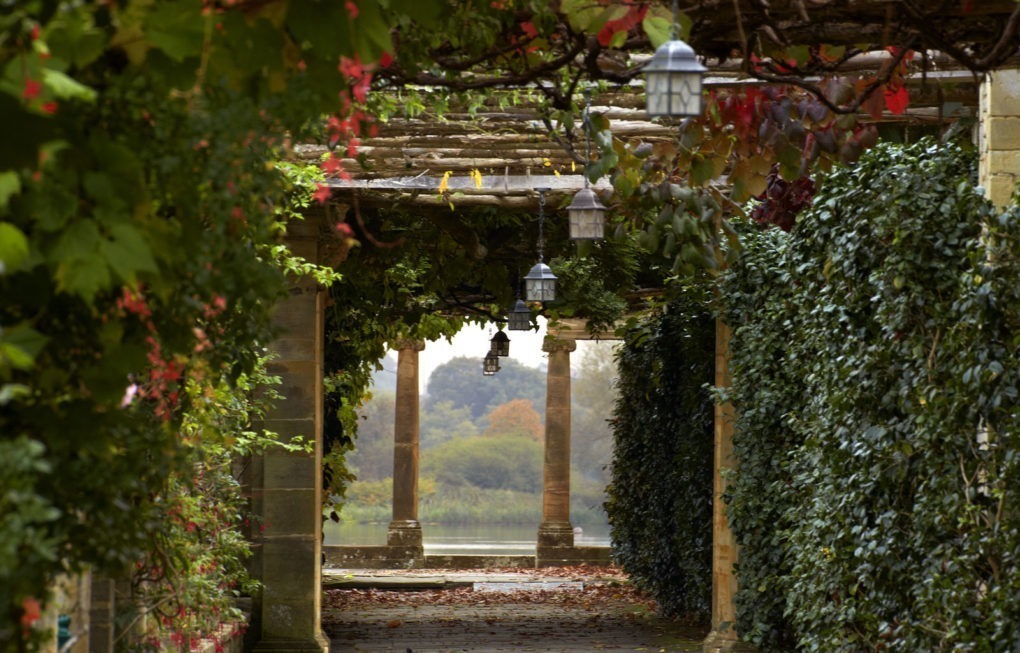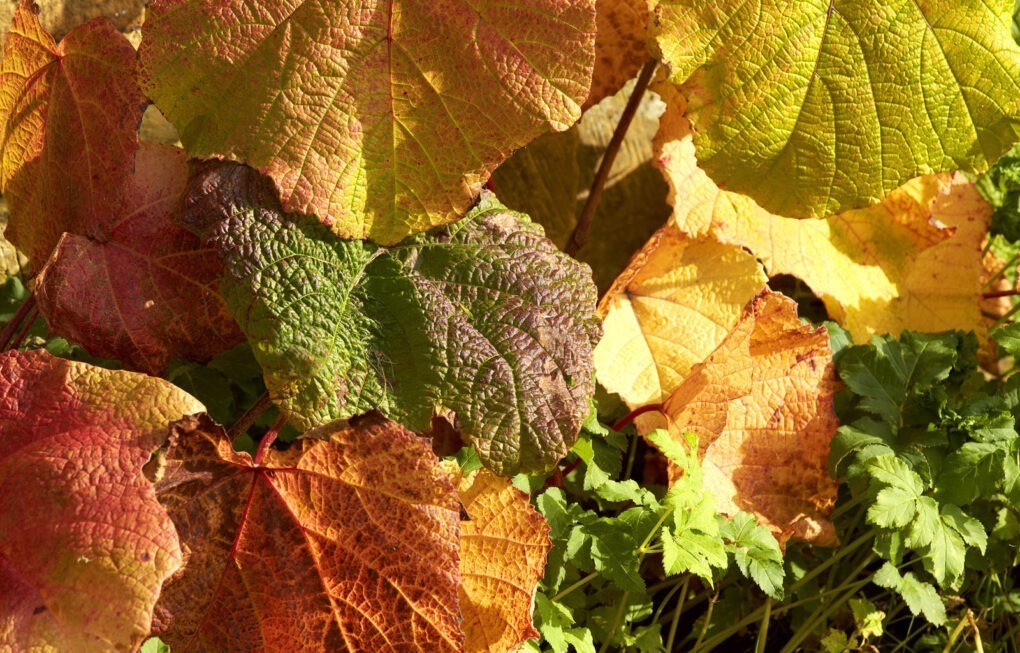
celebrating six weeks of AUTUMN colour THERaPY
Colour can impact your mood and wellbeing. This autumn Hever Castle will be exploring colour therapy through a self guided autumn trail through the different areas of the 150 acre grounds.
For many, autumn is their favourite season; it brings a welcome cooling of the summer’s heat, the fallen leaves provide a delightful carpet to crunch through, the longer shadows delight and slanting light throws a golden hue across the many colours of the season.
Over the next six weeks, during our Autumn Colour event, we will be celebrating the different coloured areas of the grounds and formal gardens at Hever Castle and the health benefits of absorbing the colours in nature. We are lucky to have such an expansive area to explore and to discover the many colours of autumn.
You can learn more about the healing power of colour this season with an introduction to forest bathing during the Autumn Colour event at Hever Castle, included with a Garden ticket.
DISCOVER MORE

Below is some information on the different effects that colour can have on your mood and wellbeing when introduced into your outdoor space.
Colour Therapy
- Yellow: uplifting. If it catches the sunlight then the yellow coloured flowers can elevate the mood and bring a smile to the face.
- Orange: often cited as the most ‘positive’ of colours, orange flowers help boost your confidence and your energy and helps you believe that things are possible.
- White: the ancient colour of purity and cleanliness, white flowers bring a sense of calm to a landscape and help stimulate a feeling of neutrality.
- Green: scientifically proven as one of the most restful colours on the eye, green plants and colour palettes help clear the mind, are restorative and encourage a sense of composure.
- Red: Go carefully with red – the colour has been linked to raised heart rates when used as a paint, but if you use it well in the garden it can induce a jolly social feeling.
- Pink: The ‘pink effect’ is a real phenomena, and exposure to the colour pink can have a calming effect of the nerves and help dispel aggression and alleviate any feelings of neglect.
- Purple: purple cone flowers, echinacea and the purple palette is linked to royalty (pertinent to Hever!) – giving a regal and superior feeling to a setting, helping to boost a feeling of mystery, romance and luxury.
- Blue: Introducing blue plants and colour into the garden can help induce a feeling of calm and wellbeing. It’s also linked to the feeling of cold, so if you have a hot courtyard garden, the introduction of blues and whites will really help you cool the space in the summer.
Look out for the following trees and plants when you visit Hever Castle:
Yellow
- Acer ‘Princeton gold’ found on Lake Walk is one of the very best acer’s for providing golden yellow colour in autumn.
- Metasequoia glyptostroboides also known as the dawn redwood is a decideuous conifer tree with yellow/brown needles.
- Acer platanoides – this yellow beauty can be spied growing close to the Boat House on the shore of the Lake, just beyond the Pavilion Restaurant.
- Liriodendron tulipifera – this beautiful ‘tulip tree’ is a vigorous and large specimen with distinctively shaped leaves that turn a buttery-yellow in autumn. The flowers grow to 4cm in length, are tulip-shaped, yellowish-green in colour and marked with orange within. The tree can be found close to the Festival Theatre.
- Quercus coccinea or ‘scarlet oak’ can be found growing on Anne Boleyn’s Walk and Lake Walk this tree has yellow/red leaves and perfect acorns which it drops in autumn.
- Acer cappadocium, on 16 acre Island, this acer is a broad-crowned, medium-sized deciduous tree. Leaves broad, 5-lobed, bright yellow when young, becoming green in summer, yellow in autumn. Flowers small, yellow.
- Sorbus ‘Joseph Rock’ in the buried treasure garden (??) is an upright tree with pinnate leaves which turn orange, red and purple in autumn, contrasting with the butter-yellow berries.
- Sorbus torminalis – found on Sunday Walk, this deciduous broadleaf tree can reach 25m when mature. The bark is brown and patterned with cracked, square plates, and the twigs are slender, shiny, grey-brown and straight. Look out for: the leaves which have 3–4 unequal lobes.
- Tilia cordata found on Lake Walk beside the Millennium Fountain, this large deciduous tree can grow to more than 20m high. Its bark is grey-brown and smooth. Look out for: the heart shaped leaves which have rusty red hairs where the leaf stalk attaches to the twig.
- Hamamelis or ‘witch hazel’ found in the Winter Garden at Hever is a beautiful yellow shrub that can be grown in smaller gardens.
Orange
- Prunus avium – found on Cherry Point on Lake Walk, is a medium-sized deciduous tree with pure white flowers 2.5cm wide in late spring, followed by small, shiny red-purple cherries and leaves that turn orange and red in autumn
- Liquidamber styraflora ‘Lane Roberts’ Liquidambar are deciduous trees grown for their alternate, maple-like leaves which display a long-lasting autumn colour. The tree is broad-crowned of medium-size with maple-like, dark, glossy green leaves which turn from orange to deep blackish-crimson for several weeks in autumn. Flowers insignificant, sometimes followed by burr-like fruit clusters
- Sorbus torminalis – found on Sunday Walk, this deciduous broadleaf tree can reach 25m when mature. The bark is brown and patterned with cracked, square plates, and the twigs are slender, shiny, grey-brown and straight. Look out for: the leaves which have 3–4 unequal lobes.
- Fagus sylvatica Asplenifolia found on Diana’s Walk, is a medium sized tree, pyramidal when young and developing a broad spreading crown with maturity, often becoming as wide as it is tall. It is a stunning specimen and the perfect choice for a parkland or feature tree.
- Northofagus procera – found in the horse-shoe shaped bed near the azaleas and grand fir on XX, from Chile, this tree was introduced to Britain in 1910 by F. R. S. Balfour of Dawyck, who distributed plants from 1914 onwards. Leaves turn to a yellow/orange in autumn.
Red
- Acer ‘Ruby sunset’ found on Lake Walk, this tree proves beautiful red foliage in the autumn.
- Acer Rubrum or the red maple, also known as soft maple, on Lake Walk is another great example if you are looking to include red foliage in your home garden – if you have space for a tree that grows up to 30m in height!
- Parrotia Persica, the Persian ironwood, found on the outer Moat, this Hamamelidaceae is closely related to the witch-hazel genus Hamamelis.
- Prunus Sargentii or ‘Sargent’s Cherry’ from Japan can be found growing close to the Moat Restaurant, this small, deciduous tree with a spreading or rounded crown has oval bronzed leaves when young, turning bright orange and red in autumn. Single rosy-pink flowers 4cm in width.
- Quercus palustris or ‘pin oak’ is a strong-growing large deciduous tree with a dense, slightly pendulous crown. These trees can be found thriving on Anne Boleyn’s Walk and you’ll see splashes of colour from them on Lake Walk.
- Quercus coccinea or ‘scarlet oak’ can be found on Anne Boleyn’s Walk and Lake Walk. The scarlet oak can often be mistaken for the pin oak or the black oak.
- Quercus rubra or ‘red oak’ can be found on 16 Acre Island, Lake Walk and beside the Pavilion. From North America, the red oak is a fast-growing large deciduous tree with an open, spreading crown and broad leaves to 22cm in length, turning red or red-brown in autumn.
- Acer palmatum ‘Osakazuki’ can be found growing in the Blue Corner at Hever. This award-winning acer is a large deciduous shrub with large, 7-lobed, serrated, bright green leaves that turn a brilliant orange-scarlet to crimson-red in the autumn.
- Viburnum opulus : The guelder rose, features pretty white lace-cap flowers in June and July, followed in autumn by glistening red berries that usually last well into the winter and that are accompanied for a few weeks by reddish autumn leaf colour- can be seen at Hever in the hedge at the Water Maze.
- Euonymus alatus – ‘the winged spindle’ can be found in the corner of the hedge close to the buddleas at the Water Maze. A large, spreading, deciduous shrub, the branchlets often developing conspicuous corky wings. The leaves are oval in shape and turn a rosy-crimson in autumn. The flowers are small and greenish to start, followed by purplish-red fruits splitting to reveal orange seeds.
- Parthenocissus quinquefolia, a fantastic climber, this plant has stunning red foliage that you can view on the Pompeiian Wall and close to the Pavillion Restaurant
- Parthenocissus tricuspidata also known as ‘Boston Ivy’ this stunning red foliage decorates the front of Hever Castle where, in the autumn is turns the walls blood red. A vigorous climber, this plant has glossy, bright green foliage, which will quickly cover a large north or east-facing wall. Likes to be planted in a partially shaded spot. Mature specimens also provide an important habitat for insects and small birds. Plant with care though – it needs plenty of space!
Purple
- Berberis thunbergii Atropurpurea, found close to the Moat Restaurant, this large shrubby tree is a good plant for year round interest. In autumn this shrub has deep reddy purple leaves. Enjoys well-drained soil and partial shade.
- Amelanchier lamarckii – found close to the Outer Moat bridge to the Winter Garden, the Amelanchier is a large erect deciduous shrub with bronze-tinged young leaves turning orange and red in autumn. White flowers in spring. Fruit a red to dark purple-black berry, soon eaten by birds
- Ampelopsis glandulosa var. brevipedunculata, found on the Pompeiian Wall, is a vigorous climber with heart-shaped leaves to 12cm long, heavily-mottled with white and pink. Branched clusters of small green flowers may appear in summer, followed by pinkish-purple berries that later turn blue
- Vitis Vinifera Purpurea, commonly known as the Teinturier Grape, can be found with it’s purple foliage on the Pompeiian Wall. This plant is a fast growing with dark green, deeply lobed leaves in the summer which begin to turn a darker, crimson red colour in autumn months.
- Cercis Canadensis ‘Forest pansy’ by the aptly named lavender Loos,grown for it’s striking foliage, the Cercis is a large deciduous shrub with leaves up to 12cm in width, broadly heart-shaped, deep red-purple turning shades of orange, bronze and red-purple in autumn. Small, bright-pink flowers appear in clusters on bare stems before the leaves in spring.
You can learn more about the healing power of colour this season with an introduction to forest bathing during the Autumn Colour event at Hever Castle, included with a Garden ticket.
DISCOVER MORE


